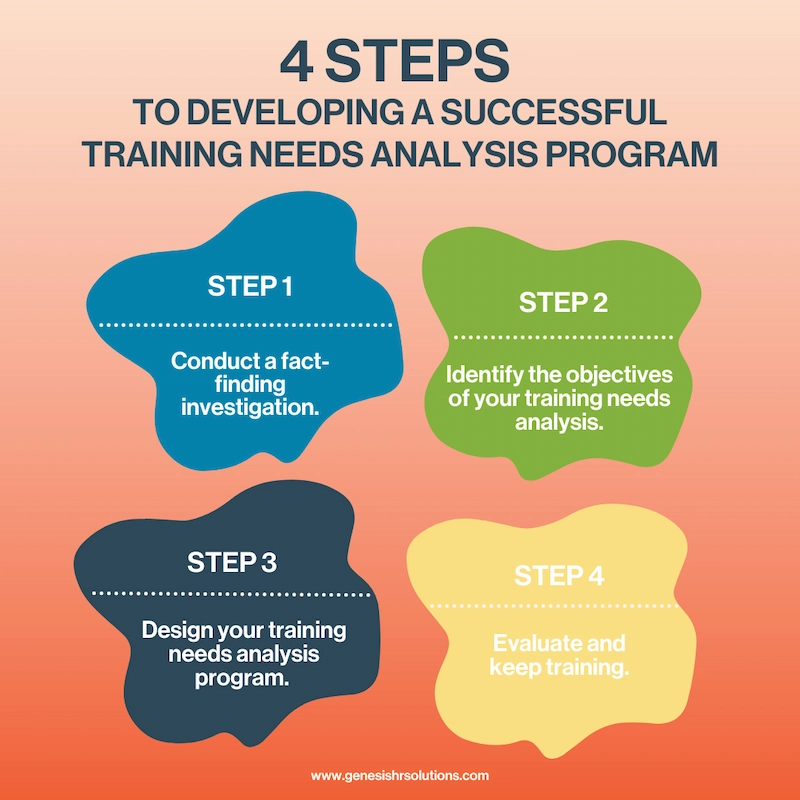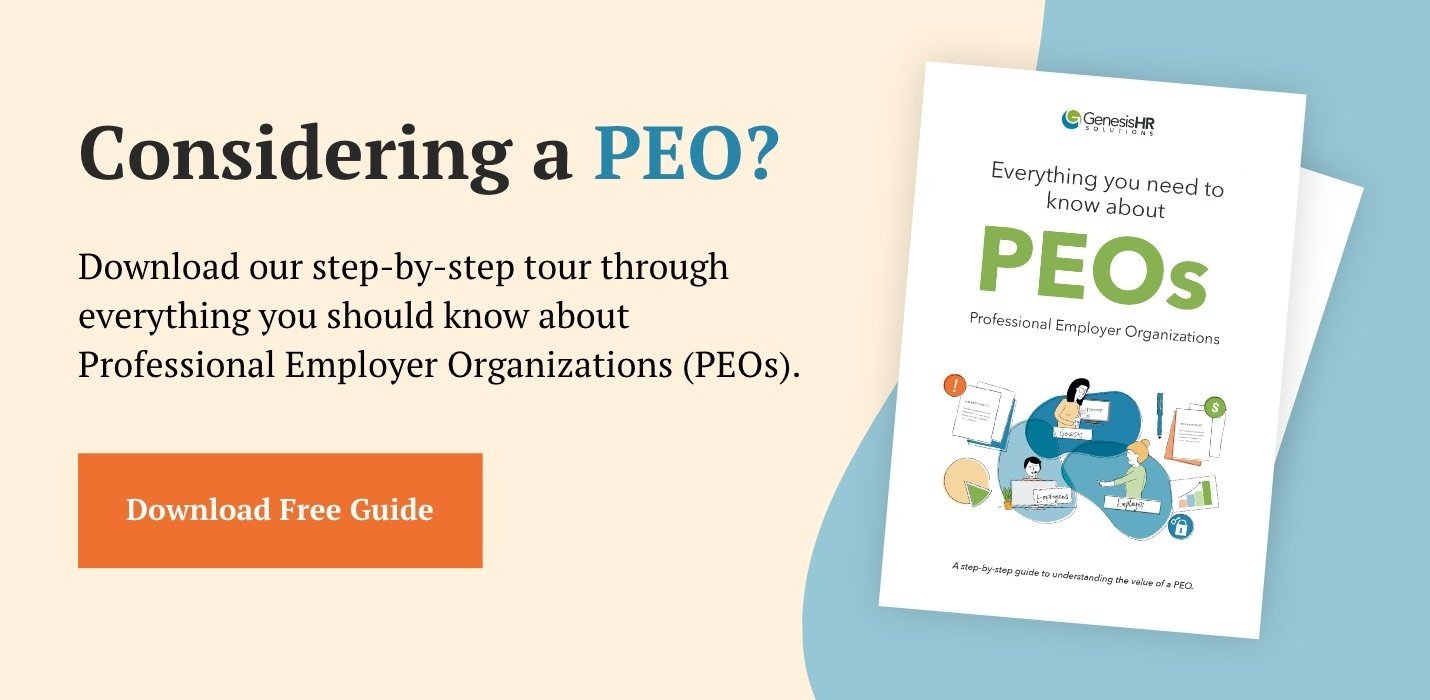For any business to be successful, its employees must have the skills necessary to perform their jobs at a high level. And in order to have those skills, training is imperative. Viewing employee training as a burdensome expense is short-sighted—in truth, training is an investment into both your employees’ and your company’s future. Often, one of the reasons training is glossed over is because employers simply don’t know which types of training should be implemented; this is where training needs analysis comes into play.
Viewing employee training as a burdensome expense is short-sighted—in truth, training is an investment into both your employees’ and your company’s future. Share on XWhat is an employee training needs analysis?
SHRM defines training needs analysis as the process of identifying employees’ “levels of competency, skill or knowledge in one or more areas and comparing that competency level to the required competency standard established for their positions or other positions within the organization.” Training needs analysis is also called “training needs assessment,” a “training needs program,” or simply “training needs.”
Through a training needs analysis, your company leaders will gain insight into the skill levels that currently exist within your organization; any gaps or lack of knowledge uncovered will determine what types of training you should offer to whom.
Download this free guide to learn what you should do (and what to avoid doing) to increase employee retention at every stage of the employee life cycle.
When should training needs analysis happen?
A training needs analysis should happen when the assessment of employee and company needs show visible problem areas that need training efforts to improve the success of the company as a whole.
Of course, it would be great to review annually, however, there is no set schedule as it really will be determined by the goings on at a company. I think making sure that employers are tuned in at all times.
The Importance Of Developing A Training Needs Analysis Program
Your organization’s goals can only be reached if employees have the necessary skills to perform their jobs well. By conducting a training needs analysis—and then actually providing training based on what you learn—you are equipping your employees to be able to work at the highest level.
Companies that offer comprehensive training programs have 218% higher income per employee than companies without formalized training.
Often, employees are hired at a company and aren’t equipped with the skills they need to be successful. It’s the responsibility of company leadership to offer resources and provide training. This means training should be a perpetual budget item and an integrated part of employee onboarding and review.
While employers often view training as a burdensome expense, it is actually an investment in your company’s growth and future health. In addition to increasing retention, employees who are training perform better at their jobs: 65 percent of employees say training and development opportunities positively affect their attitudes toward their jobs.
And it’s not just good for your employees—companies that invest in employee training enjoy a 24% higher profit margin than those that don’t.
4 Steps To Developing A Successful Training Needs Analysis Program

1. Conduct a fact-finding investigation.
A training needs analysis process flow begins with fact-finding. Before executing any plan, it’s important to identify where deficiencies and problem areas exist; these should be the areas of focus for training. Fact-finding methods include observation, employee records reviews, and interviews.
A training needs analysis example: GenesisHR
At our own company, our team members have biweekly one-on-one conversations with managers to review our performance and current projects, which allows our team to ensure that we have all of the resources we need for a successful operation.
We find that giving employees the opportunity to voice any objections or concerns regularly allows them to feel heard, and it also allows an employer the opportunity to act by having the conversation on what that employee or team may need to feel more confident or more equipped for their role.
2. Identify the objectives of your training needs analysis.
Next, determine the behaviors, knowledge, and attitudes you want your employees to learn or enhance. Your training needs analysis questionnaire for employees should ask questions like “What do my employees already know? What do they need to know? What is our company willing to do to provide that to employees?” Once you know which department(s) the training needs apply to and which specific skills training your employees require, you can design programs that will achieve those objectives.
3. Design your training needs analysis program.
Once you’ve identified the needs that exist within your organization and what you want to accomplish, it’s time to design individual training programs. You can choose from these seven types of employee training programs:
- Classroom
- Technology-based
- Hands-on
- Video
- Role playing
- Reading
- Simulators
The training method(s) you choose will vary depending on your industry, goals, and budget; you may benefit from using multiple types of training.
Need help with training?
One of our PEO solutions at GenesisHR is to facilitate company training efforts by finding vendors who can help you construct the programs your employees need. No matter your industry, we remove the burden of the legwork from the entire training process for you. Using best practices from your industry, we can create or customize training specific to your needs.
We’ve developed training programs we can deliver in multiple formats. We can even customize presentations for your groups on topics such as:
- Harassment Prevention
- Interview Basics
- Supervising Employees
- Performance Management
- Customer Service
4. Evaluate and keep training.
Once you provide employees with the training and resources they need, evaluate whether or not the training led to achievement of goals (or made progress toward those goals), and continue to provide training as needed. These steps are crucial to ensuring employees are continuing to practice what they’ve learned.
You should periodically revisit your training needs objectives and—and if your employees aren’t coming away with demonstrable skills—consider switching up your training or reevaluating the effectiveness of your trainer.
GenesisHR Solutions: Your PEO partner
At Genesis, our team of HR experts can walk you through every aspect of the employee life cycle, including training, and help you identify opportunities for improvement. Your employees will be able to perform their roles better, so your company will be better positioned to meet its goals. With a PEO partner like Genesis, this is an easy change you can make that will save you money and time. Learn more about a partnership with Genesis with a free discovery call.





